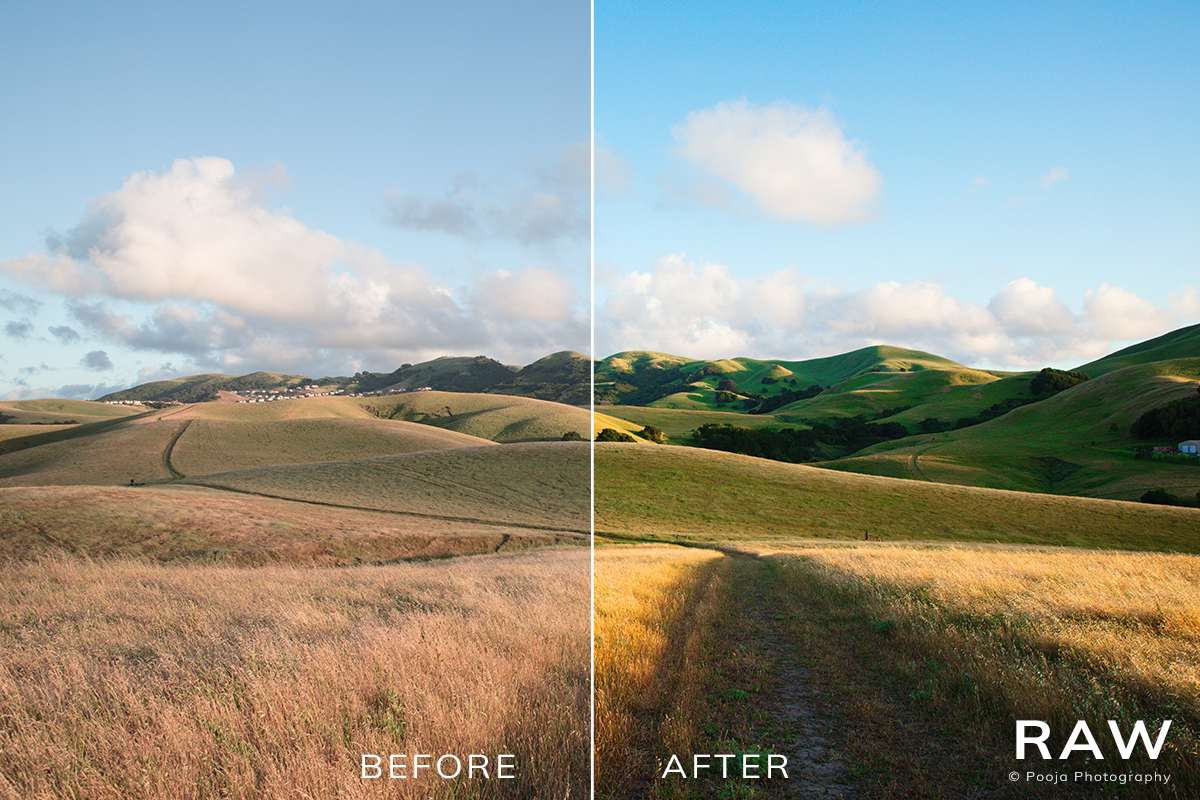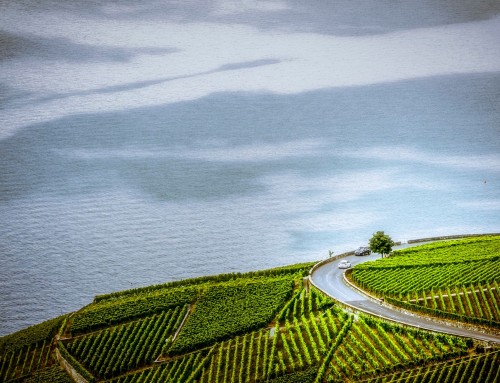The type of file you use is an important choice when capturing photographs. Most commonly photos are recorded in either JPEG or RAW format. A JPEG image is a file that has been developed by the camera. Because it has been developed, the camera does not include all the data recorded by the sensor. On the other hand, RAW files contain all the information the camera’s sensor records without any processing. There are advantages and disadvantages to either format, which we discuss in this article.
Exposure, our advanced creative photo editor, will happily process either format. However, editing RAW files provides significantly more latitude to make dramatic changes to the photo, while retaining the highest quality.

When shooting JPEG images, the camera runs the photo through its image processor. What you see on the back of the camera is what you will see on the computer screen. Note the differences when comparing the unedited RAW and JPEG images. Photo @ Pooja Photography
JPEG
JPEG format is a good choice because of popularity. JPEGs are so widely-supported that you can create them with most cameras and edit them with most software. When you save an image as a JPEG, some data from the image will be lost and deleted forever to reduce the size of the file. This method is called “lossy compression.” In most cameras and software that create JPEGs, the compression amount can be selected. Stronger compression will make a smaller image size, but that may result in compression artifacts.
JPEG Advantages
This file type is straight-forward to use because the edits applied to the photo are baked in. This means you will see the same thing on the back of the camera, or inside whatever software you open it with. No editing is needed to look at the image, so it’s basically ready to use.
The compact file size benefits your workflow in read and write speed. Shooting JPEGs will enable your camera to capture more images at a much faster rate. JPEGs also speed up your workflow when copying them to the computer, uploading to social media, or saving them to archives.
JPEG format is compatible with tons of programs. What really sets it apart is built-in viewing. You can view JPEG images on devices other than a computer, such as digital picture frames or mobile phones.
JPEG Disadvantages
The small file size of this format is possible because of sacrifices to image data. The lossy compression used in JPEG images can result in posterization and visible artifacts. The amount of compression applied to the image is adjustable.
Another disadvantage about JPEG images is the limit of 8-bit color. 8-bit images have a maximum of 256 tonal values per color channel. This can really show when making editing adjustments to the image. The low bit depth limits the detail recovery when making adjustments in highlight and shadows.
Edits made to JPEG images are destructive. This means when saved, the pixel data of the image is changed by processing adjustments. Exposure uses a non-destructive workflow to keep the original images untouched, which enables you to reset the image to its original state, revisit tweaks, or try a new look.
RAW
RAW images contain unprocessed image data from the camera’s sensor. Because they aren’t processed, RAW files are like exposed but undeveloped film. A RAW image needs to be processed before it can be printed or shared, just like raw food needs to be cooked before consuming. In addition to sensor data, RAW images include metadata information, such as exposure settings, camera and lens model, date, time, and more, which can all be used for organizing images.

With superior color information, RAW files can withstand considerable editing adjustments without showing a loss in image quality.
RAW Advantages
RAW files contain lots of color information. A 12-bit RAW file contains 4,096 tonal values per channel, and a 14-bit RAW image has even more. The massively wide dynamic range in these files enable far superior highlight and shadow recovery. With so much more color information, these images have a very fine level of adjustability. The additional color data in the file can be used for smarter, better, and far more complex sharpening algorithms. RAW processing provides control over gamma, white balance, brightness, contrast, and more.
One of the biggest perks to using RAW files is non-destructive editing. Adjustments made to RAW images are not applied to the image pixels, but instead are recorded in sidecar files. This means the image can always be reset to its original state or edited in a different way.
RAW Disadvantages
RAW is a proprietary format that is tied to each camera model. That can make it difficult to find software that supports the files, especially if the camera model is newly released. If you can’t find support for it, your only option is to convert it to another type of file. Fortunately RAW images can be seamlessly converted to DNG, but it is an additional processing step.
RAW image file sizes are massive. That much data is difficult to handle. RAW files slow down the camera when capturing images, quickly fill up memory cards, and can be hard for your computer to process.
Choose Your Format Wisely
There is a huge difference in the ability to recover details and colors in RAW images when compared to JPEGs. If you plan to process the images on a computer, RAW format is our recommendation. If you’re casually snapping shots off for Instagram, you can stick with JPEG. If you have the option, and you have lots of memory cards, set your camera to capture both file types.
Try Exposure Today




